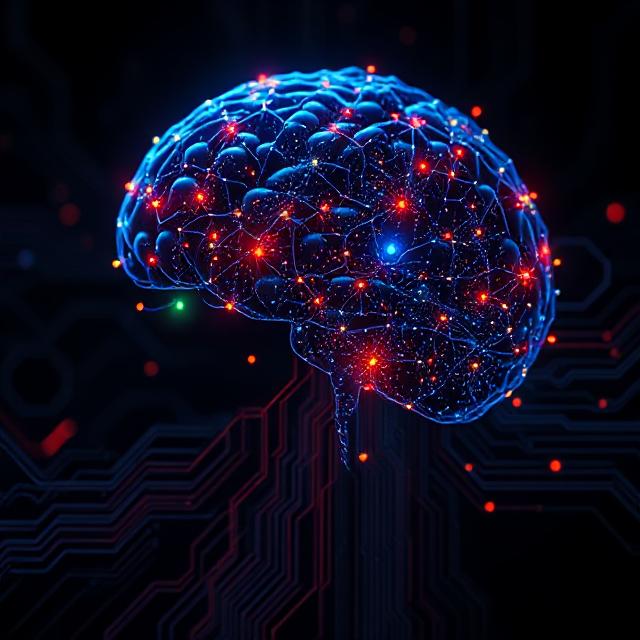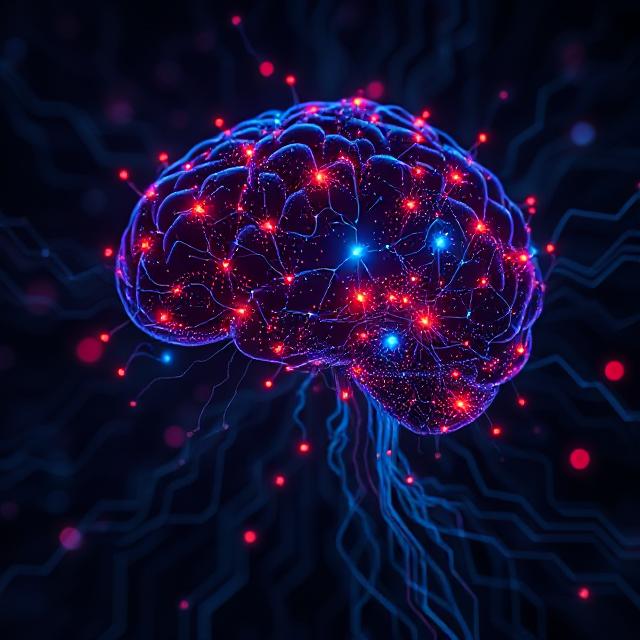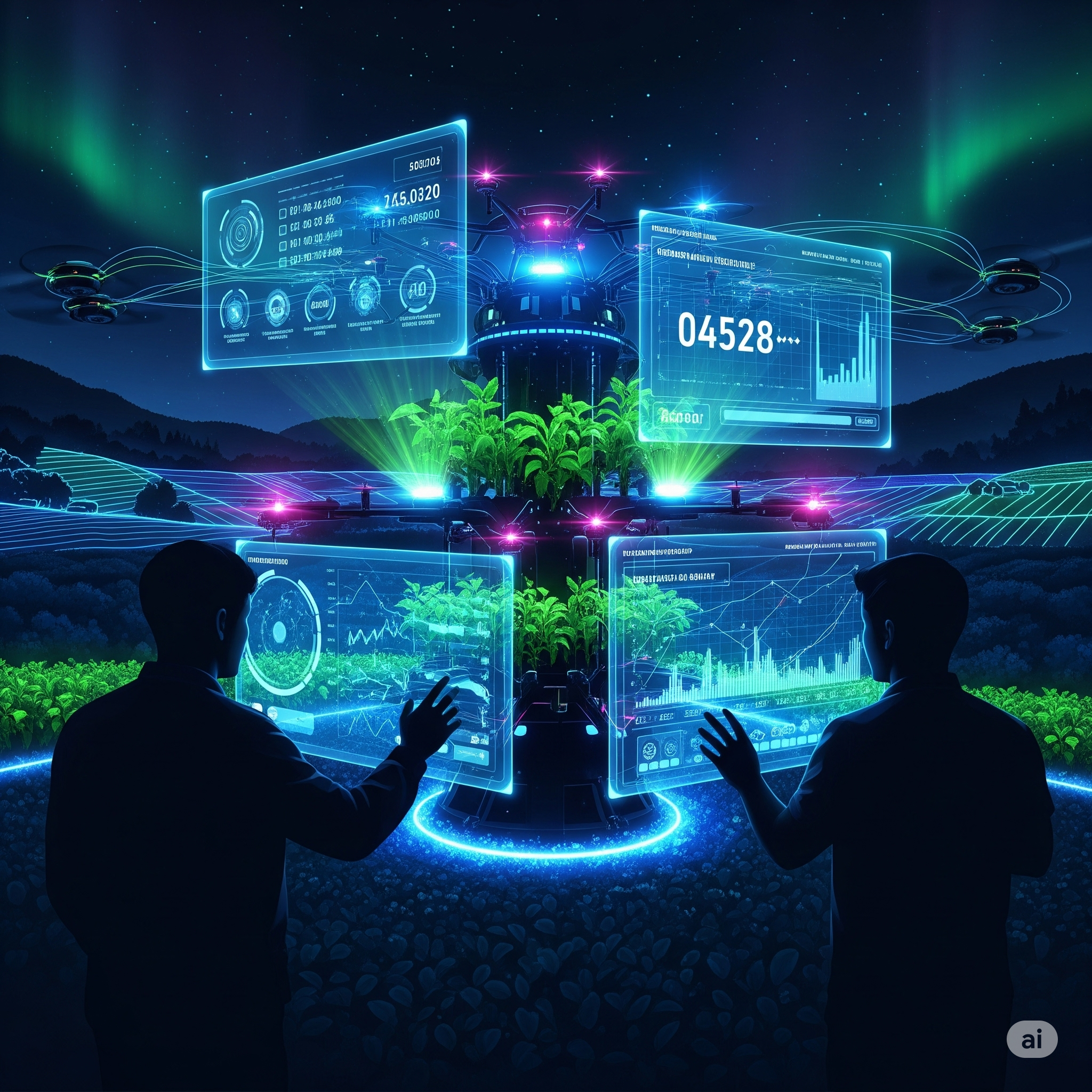Introduction
The human brain is often described as the most powerful and efficient computing system known to science. It effortlessly processes vast amounts of information, adapts to new experiences, and learns continuously—all while consuming remarkably low energy. This extraordinary ability has inspired researchers to create computing systems that emulate the brain’s architecture and functioning. This field is called Neuromorphic Computing.
Neuromorphic computing represents a radical shift from traditional computing architectures. Instead of relying on classical digital processors that operate sequentially, neuromorphic systems mimic the brain’s neural networks using specialized hardware and software, aiming to replicate biological neural structures and processes. This technology promises to revolutionize artificial intelligence, robotics, sensory processing, and many other fields by offering energy-efficient, adaptable, and parallel information processing.
This article explores the fundamentals, architecture, benefits, challenges, applications, and future prospects of neuromorphic computing.
What is Neuromorphic Computing?
Neuromorphic computing is an interdisciplinary approach to building computer architectures inspired by the structure and function of the nervous system, particularly the brain. The term “neuromorphic” was coined in the late 1980s by Carver Mead, a pioneer in analog VLSI design, who envisioned electronic systems that emulate neural behaviors.
Key Characteristics:
- Event-driven operation: Similar to neurons firing only when needed.
- Massive parallelism: Like networks of interconnected neurons.
- Adaptive learning: Systems can change synaptic weights to learn over time.
- Low power consumption: Inspired by the brain’s energy efficiency.
Unlike conventional Von Neumann architectures, which separate memory and processing units, neuromorphic systems tightly integrate these components, enabling real-time processing and learning with minimal latency and power.
Neuromorphic Architecture: The Brain’s Blueprint
1. Neurons and Synapses
The biological brain consists of billions of neurons interconnected by synapses. Neurons process signals and transmit them when activated, while synapses adjust their strength to encode learning and memory.
Neuromorphic hardware replicates these components using:
- Artificial neurons: Electronic circuits that simulate the firing and signaling behavior.
- Artificial synapses: Devices whose conductance can be modulated to represent synaptic weights, essential for learning.
2. Spiking Neural Networks (SNNs)
Neuromorphic computing often employs Spiking Neural Networks, which mimic the timing of neuron spikes (action potentials). Unlike traditional neural networks that use continuous values, SNNs encode information in discrete spikes, allowing efficient event-driven computation and asynchronous communication.
3. Memory-Processing Integration
Neuromorphic chips integrate memory and processing units, breaking away from the bottleneck of data transfer in classical systems. This integration is crucial for mimicking brain efficiency.
How Does Neuromorphic Computing Work?
Neuromorphic systems process information by emulating how neurons communicate through electrical spikes.
- Inputs from sensors or data sources are converted into spike trains.
- Artificial neurons accumulate incoming spikes until a threshold is reached.
- When the threshold is crossed, the neuron “fires” and sends a spike to connected neurons.
- Synaptic weights are adjusted using learning rules (e.g., Spike-Timing Dependent Plasticity, or STDP), allowing the system to adapt and learn from data.
This event-driven model allows neuromorphic systems to process data only when necessary, dramatically reducing power consumption compared to traditional continuous processing.
Comparison: Neuromorphic vs Classical Computing
| Feature | Classical Computing | Neuromorphic Computing |
|---|---|---|
| Architecture | Von Neumann (separate CPU & memory) | Integrated memory and processing |
| Processing Style | Sequential and clock-driven | Parallel and event-driven (asynchronous) |
| Data Representation | Binary digits (0/1) | Spike-based, temporal encoding |
| Power Efficiency | Relatively high power consumption | Extremely low power, brain-like efficiency |
| Learning Capability | Requires explicit training | Online, continuous adaptation (unsupervised) |
| Suitable Tasks | General purpose computing | Pattern recognition, sensory processing, AI |
Applications of Neuromorphic Computing
1. Artificial Intelligence and Machine Learning
Neuromorphic computing enhances AI by providing hardware optimized for real-time learning and decision making. It enables efficient implementations of neural networks that can learn and adapt in changing environments, such as:
- Real-time image and speech recognition.
- Adaptive robotics capable of sensory-motor learning.
- Autonomous systems requiring fast and energy-efficient decision making.
2. Robotics
Neuromorphic chips can be embedded in robots to process sensory data locally, allowing fast reflexes and complex behaviors without relying on cloud computation. This reduces latency and improves autonomy.
3. Sensory Processing
Neuromorphic sensors mimic biological senses like vision and hearing. For example, event-based cameras output data only when changes occur in the scene, reducing data redundancy and power use. Paired with neuromorphic processors, this enables:
- Efficient real-time environmental sensing.
- Enhanced object detection and tracking.
4. Healthcare and Prosthetics
Neuromorphic systems are used in developing brain-machine interfaces and prosthetic devices that communicate directly with neural tissue, improving responsiveness and natural control.
5. Internet of Things (IoT)
The energy efficiency of neuromorphic chips makes them ideal for IoT devices that require local, low-power data processing, enabling smarter and more autonomous sensor networks.
Leading Neuromorphic Technologies and Platforms
Several organizations and research groups have developed pioneering neuromorphic hardware platforms:
1. IBM TrueNorth
IBM’s TrueNorth chip contains 1 million neurons and 256 million synapses. It uses a digital, event-driven architecture and has been demonstrated in pattern recognition tasks with extremely low power consumption.
2. Intel Loihi
Intel’s Loihi chip supports on-chip learning with a programmable architecture of spiking neurons and synapses. It is designed for AI workloads that benefit from adaptability and real-time processing.
3. BrainScaleS
A European project developing analog neuromorphic chips that model neural dynamics in real-time, used primarily for neuroscience research.
4. SpiNNaker
Developed by the University of Manchester, SpiNNaker is a massively parallel digital architecture designed to simulate large-scale spiking neural networks.
Advantages of Neuromorphic Computing
- Energy Efficiency: Drastically reduces power consumption compared to classical computing, mimicking the brain’s 20-watt power usage.
- Real-Time Learning: Enables continuous learning and adaptation without needing retraining from scratch.
- Robustness: Neuromorphic systems can tolerate noise and hardware faults due to their distributed nature.
- Scalability: Parallel architecture allows scaling to large networks for complex tasks.
- Biological Plausibility: Provides a testbed for understanding brain function and disorders by simulating neural circuits.
Challenges and Limitations
Despite its promise, neuromorphic computing faces several challenges:
1. Hardware Complexity
Building large-scale neuromorphic chips with billions of artificial neurons remains a technological hurdle. Fabrication of analog components and synaptic devices is still immature.
2. Programming Paradigm
Neuromorphic systems require new algorithms and software tools. Programming spiking neural networks is more complex than traditional neural networks.
3. Lack of Standards
There are no universally accepted architectures or programming models, leading to fragmentation in research and development.
4. Integration with Classical Systems
Neuromorphic processors currently complement rather than replace classical computers, requiring efficient interfacing.

Future Prospects
Neuromorphic computing is expected to revolutionize computing paradigms in the coming decades by:
- Driving breakthroughs in AI and machine learning with brain-like processing.
- Enabling smart, autonomous systems across robotics, healthcare, and IoT.
- Providing insights into neuroscience by simulating biological neural circuits.
- Contributing to energy-efficient computing, critical for sustainable technology development.
Research continues to advance on hardware innovations, algorithm development, and real-world applications. Governments and private enterprises worldwide are investing heavily in neuromorphic research, aiming for breakthroughs in cognitive computing and artificial general intelligence (AGI).
Conclusion
Neuromorphic computing represents a paradigm shift that aims to replicate the brain’s remarkable computational efficiency and adaptability. By combining principles of neuroscience, electrical engineering, and computer science, it offers a promising path toward the next generation of intelligent machines.
As we progress, neuromorphic systems could unlock AI capabilities far beyond what classical computers can achieve, fostering innovations that impact every aspect of society—from healthcare and robotics to environment monitoring and beyond.
For students, researchers, and technology enthusiasts, understanding neuromorphic computing is key to staying at the forefront of emerging technologies shaping the future.
Summary Points
The future holds vast potential for breakthroughs in AI, neuroscience, and sustainable computing.
Neuromorphic computing emulates the brain’s structure and function for efficient, parallel processing.
It uses artificial neurons and synapses, often in the form of spiking neural networks.
Benefits include energy efficiency, real-time learning, robustness, and scalability.
Key applications are in AI, robotics, sensory processing, healthcare, and IoT.
Challenges include hardware complexity, programming difficulties, and standardization.




